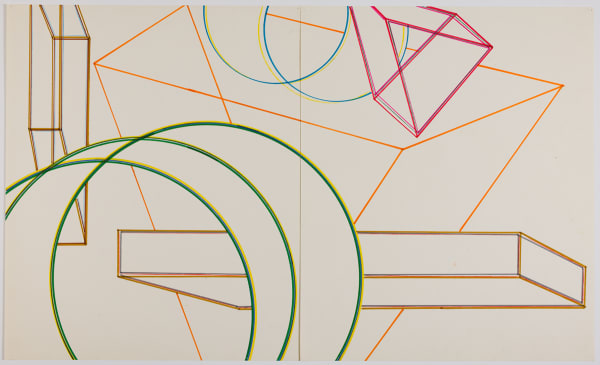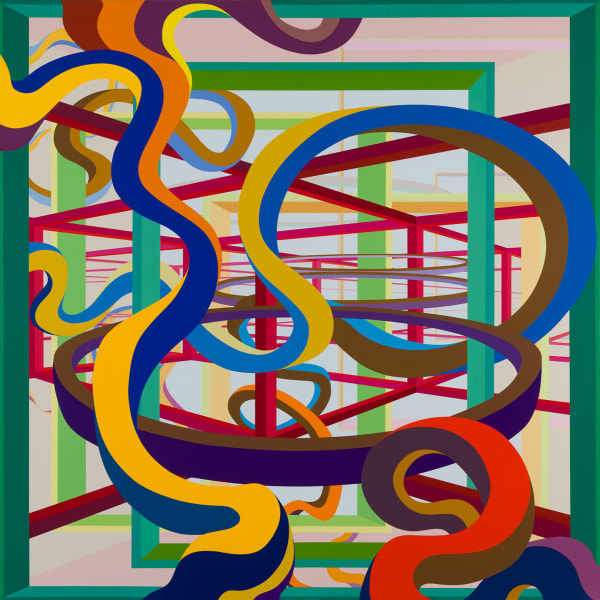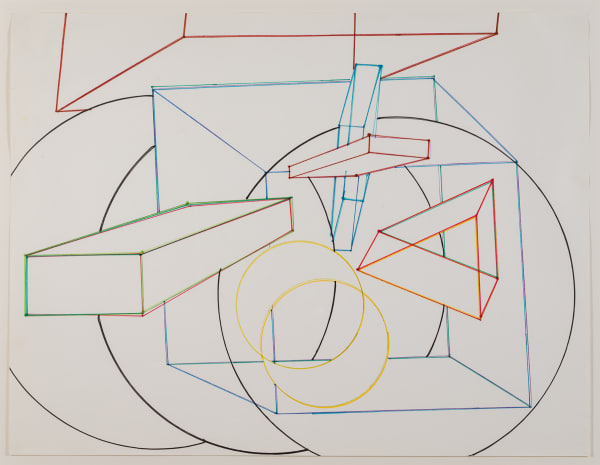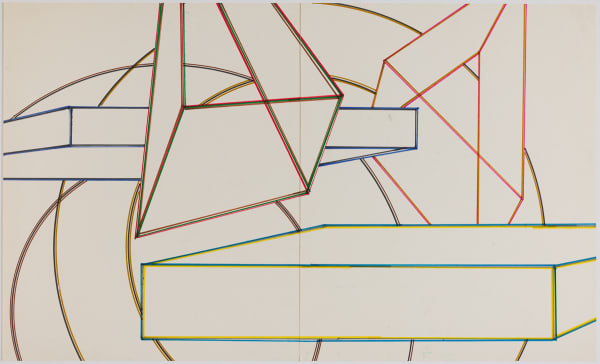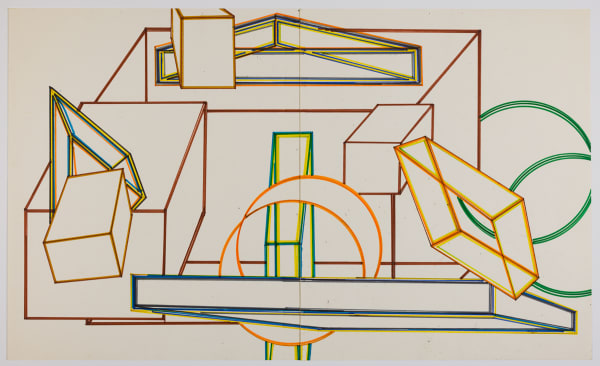Al Held | Constructing Abstraction
-
 Al HeldTrajan's Edge IV, 1983Acrylic on canvas108 x 108 inches
Al HeldTrajan's Edge IV, 1983Acrylic on canvas108 x 108 inches -
 Al Held72-B5 & B6, 1972Marker on paper24.75 x 41 inches
Al Held72-B5 & B6, 1972Marker on paper24.75 x 41 inches -
 Al HeldVorcex IV, 1984Acrylic on canvas108 x 108 inches
Al HeldVorcex IV, 1984Acrylic on canvas108 x 108 inches -
 Al Held72-A3 & A4, 1972Marker on paper24.75 x 41 inches
Al Held72-A3 & A4, 1972Marker on paper24.75 x 41 inches -
 Al Held72-B7, 1972Marker on paper35 x 46 inches
Al Held72-B7, 1972Marker on paper35 x 46 inches -
 Al Held73.3A & 4B, 1973Marker on paper24.75 x 41 inches
Al Held73.3A & 4B, 1973Marker on paper24.75 x 41 inches -
 Al HeldA-11/12, 1972Marker on paper24.75 x 41 inches
Al HeldA-11/12, 1972Marker on paper24.75 x 41 inches -
 Al HeldA 15/16, 1972Marker on paper24.75 x 41 inches
Al HeldA 15/16, 1972Marker on paper24.75 x 41 inches -
 Al HeldA 21/22, 1972-1973Marker on paper35 x 45.25 inches
Al HeldA 21/22, 1972-1973Marker on paper35 x 45.25 inches -
 Al HeldA 23/24, 1972-1973Marker on paper35 x 45.25 inches
Al HeldA 23/24, 1972-1973Marker on paper35 x 45.25 inches -
 Al HeldA 25, 1972-1973Marker on paper35.06 x 45.25 inches
Al HeldA 25, 1972-1973Marker on paper35.06 x 45.25 inches -
 Al HeldA 27/28, 1972Marker on paper35.06 x 45.25 inches
Al HeldA 27/28, 1972Marker on paper35.06 x 45.25 inches -
 Al HeldA-7/8, 1972Marker on paper24.75 x 41 inches
Al HeldA-7/8, 1972Marker on paper24.75 x 41 inches
Al Held (1928–2005) was a leading figure in postwar American abstraction, celebrated for his large-scale, spatially complex paintings. After rising to prominence in the 1960s with his hard-edged geometric canvases, Held spent much of the 1970s working extensively on paper before returning to painting in the 1980s with a renewed engagement in color and illusionistic space. His work has been exhibited widely and is included in the permanent collections of major museums worldwide, including The Museum of Modern Art, New York; The Whitney Museum of American Art, New York; and The Art Institute of Chicago.
Marked Up
Daniel Belasco
Art historian and Executive Director, Al Held Foundation
It is a testament to Al Held’s resourcefulness that he embraced markers as a serious medium for drawing. Deliberative linear abstractions are rarely made with markers, as their free-flowing ink encourages looseness and informality. In the 1970s expressionist artists like Jean Dubuffet and Paul Sharits used markers in densely wrought curvilinear drawings, while conceptual artists like Robert Smithson and Hanne Darboven used markers to rough out plans and jot ideas. Held, on the other hand, experimented with markers to embolden geometric shapes with airy precision and vivid color.
For a dozen years from 1967 to 1978, Held pursued a formally rigorous project by painting contradictory perspectival systems in harmonious configurations exclusively in black and white. All the while he developed an independent, yet closely related, drawing practice to further elaborate the volumetric cubes, cylinders, and triangles that formed the essential language of his eloquent painting. Five years into the Black and White series, Held obtained a set of high-quality markers and enhanced his abstract, linear drawings with vibrant colors—blue, green, red, orange, yellow—balanced with black, brown, and gray. The plotted dimensional forms in tight spatial configurations closely related to the Black and White paintings underway in his studio.
Held approached drawing like an architect, working with tools such as rulers, compasses, and stencils on drafting tables in the solitude of his studio. His experimentation with markers in the early 1970s chimes with how designers readily adopted markers to sketch concepts and render proposals. Markers facilitated Held’s assessment of the impact of color on the optical legibility of dynamic interactions of circles, cylinders, cubes, and three-dimensional triangles. The eighth-inch chisel tip permitted a variety of line weight and color saturation.
Drawings such as A 25 (1972) represent a minimalist approach, with each form portrayed with a single color line. In more embellished works like A 15/16 (1972) he introduced the tripartite line, composed of parallel colors such as blue, mustard, and green, which further individualize each shape. With these works on paper Held first began to scout the reintroduction of color to his paintings, which would not occur for another half dozen years. Held later employed multipart lines to distinguish the shapes of his Return to Color paintings of the late 1970s and early 80s. Two related paintings on view in this exhibition, Trajan’s Court IV (1983) and Vorcex IV (1984), represent the next step in Held’s evolution from projected construction to illusionistic forms modeled with light and shadow.
The marker drawings have retained their juicy color for over a half century. Held probably used a high quality, xylene-based medium like Design Art Markers which were popular in the 1970s.[1] Versatile, quick-drying, and brilliant, they shared these qualities with water-based acrylic, Held’s preferred paint. He never exhibited the marker drawings in his lifetime, however, even as he began to exhibit his graphite drawings starting in [1973]. Only in the past decade the Al Held Foundation has presented them to the public to reveal a crucial moment in Held’s rich and expansive career. The [eleven] marker drawings gathered at David Klein Gallery represent an artist at the height of his powers testing a new medium to look forward to the future.
[1] Suggested by Jay Krueger, head painting conservator at the National Gallery of Art, Washington, DC. Thanks as well to Mara Held, Chad Ferber, and Carter Foster for their input and ideas.


